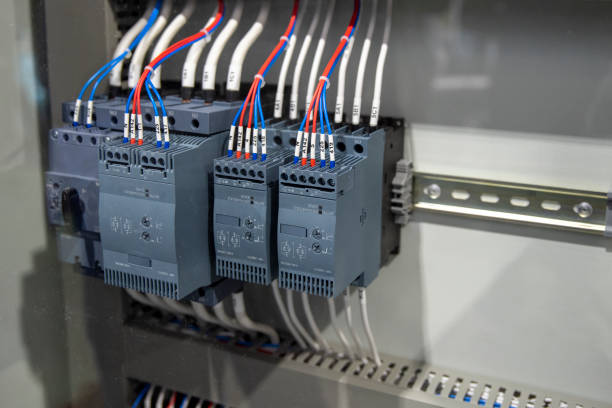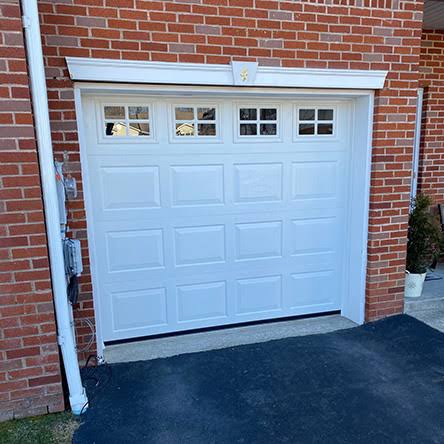The rise of new-age intelligent automation systems and other industrial-grade equipment has led to an unquenchable need for small sized, compact, dependable, and cost-effective power supply solutions. Furthermore, the ac/dc switching power supply serves as a basic modular component of varying industrial value in modern advanced systems ranging from smart infrastructure systems to manufacturing plants.
In what practical ways does this modern power supply outperform traditional linear models? And what are the concrete benefits in real world industrial situations? Also, how does selection as a trusted automation parts seller impact the system’s performance reliability?
This article illustrates the salient differences between conventional power supplies and ac/dc switching power supplies, explains why each type is better suited to certain conditions, and helps industrial buyers understand what decisions are right for them.
The Fundamentals: Power Supply Switching Methods: Conventional Vs. Modern
Every automated system has a set of core components, one of which is a power supply whose function is to convert electricity into a controllable unit, manage its flow, and maintain a constant voltage and current level into machines and control units. They all accomplish the same task, but the methodologies employed are far from uniform.
Conventional linear power supplies clean AC voltage with a transformer and step it down to lower voltage. They apply a linear regulator to maintain the output voltage. While straightforward in terms of structure, they are bulky, heavy, and inefficient, particularly when the load varies.
AC/DC switching power supplies, on the other hand, employ high-frequency switching techniques for efficient power conversion. They need to change the current transistors’ states at high speeds and smooth the output voltage with inductors and capacitors, or filters. The end products are smaller and lighter. They provide more power and are more efficient and better suited to high-performance environments.
The availability with the rise of the ac/dc switching power supply alongside trusted industrial automation parts suppliers has made these devices more tailored to customization approaches for industrial application.
Efficiency: Why It Matters in High-Demand Operations
The efficiency of the power supply is another major reason why these devices are gaining popularity. It is indeed difficult to outperform complex, highly integrated devices. But owing to the outdated construction of the linear power supply, it consumes a substantial amount of electricity and dissipates an even larger amount of exhausted energy in the form of heat. In high-demand scenarios such as industrial operations, every single watt is useful, making it a nuisance for these purposes.
Their efficiency ratings sit in a sweet spot between 80% and 95%, especially when compared to older models which often sit beneath 60%, translating into:
- Cost-effective energy savings
- Decreased heat emission
- More efficient cooling systems
- Enhanced operational longevity
For operations that require round-the-clock running—like automated assembly lines or even data centers—these figures can yield massive savings. To address your high-efficiency needs, an industrial automation parts vendor would be able to guide you to appropriate models based on your load specs.
Flexibility in Size, Weight, and Integration
Components need to be robotic arms or even control cabinets. In these cases, the supply space becomes cramped and hard to navigate, making the size of components crucial. Conventional power supplies use bulky transformers and heat sinks which drastically limits available room.
Use of high-frequency design means switching power supplies take up less space and are lighter.
Compact design increases the rate of ease by which supplies can be:
- Integrated into tight places
- Mountable on DIN or internally within modular systems
- Designed mobile or suspended devices
This benefit becomes particularly useful in smart manufacturing and autonomous logistics where system miniaturization is already a trend. With a good industrial automation parts vendor, you can get many supporting form factors along with diverse space and mounting styles suitable for your unique application design.
Thermal Management and Operational Efficiency
High power levels are a threat to electric power reliability. As with other types of electrical energy supply systems, traditional power supplies work with lower efficiency. This leads to them generating more heat which makes use of bulky external cooling systems as well as huge heat sinks indispensable.
Unlike AC or DC switching power supplies, which have advanced features designed specifically for cooling thermal management, other power supplies utilize bulky external components. Such features commonly include:
Minimization of heat via highly efficient conversion.
Smart systems for the control of fan efficiency.
Internal protection measures for overheating.
Coating for protection against the intrusion of moisture and dust.
Even these means do not guarantee that cooling in thermal management is the least possible for other components of the system computer.
Due to the above features, the mean time between failures (MTBF) increases, the number of system outages, and the need for repair and service becomes less, and the need for maintenance becomes less frequent.
In the pharmaceutical and food processing industries, where dependability is critical, these factors contribute greatly to overall productivity.
By working with a trusted supplier for parts of industrial automation, you ensure that the components that you receive are certified and checked for the conformity of the value of industrial grade thermal requirements.
Load Response, Voltage Regulation, and other Differences
The most distinguishing parameter around which power supplies can be grouped is their behavior during changing load conditions. Unlike linear, switching power supplies handle surge and dip of voltage much better. When an equipment switches on or off relatively quickly, traditional equipment has challenges dealing with the dip / surge periphery.
Switching power supplies offer:
Tighter load regulation
Faster response to transients
Protection from overvoltage, overcurrent, and short-circuit
Wider range of input voltages
Such functions are important in automation systems where components like sensors, actuators, PLCs, and drives are mounted because they rely on accurate and stable voltage. The presence of unstable voltage may lead to signal inaccuracies, cutoffs, irreversible damage over time, or premature failure.
Sourcing from a trusted industrial automation parts supplier gives immediate access to devices with verifiably consistent and homogeneous performance under load suitable for complex inter-connected systems for industrial buyers.
Cost Considerations Over Time
Although initially more expensive than linear models, the total cost of ownership (TCO) switches to being lower when considering:
Efficiency of energy consumption
Maintenance costs
Reduction in non-productive work time
Longevity of equipment
The return on investment (ROI) particularly in large scale lighting systems, smart grids, and automated production lines is seen within the preceding months.
Suppliers who offer lifecycle analysis, performance benchmarking, and bulk order assistance.
When to choose these linear models
With their shortcomings considered, traditional linear power supplies have merit at low-noise analog applications. These may include the cases of audio processing or precision laboratory equipment where ripple and switching noise need to be reduced.
Nevertheless, in the case of industrial applications that have a large demand and require high operational efficiency, robustness, and scalability, the switching model tends to be the most popular choice.
Conclusion: The Power of Industrial Growth Through Supply Selection
The use of ac/dc switching power supplies instead of linear models is a groundbreaking industrial automation strategy. The advancement of modern switching supplies is not only about further improving efficiency and performance, but also about miniaturization, flexibility, and system intelligence.
The use of modern ac/dc switching power supplies and industrial automation components from a reputable supplier ensures that you have the latest cutting-edge components designed for industrial conditions.
The advantages from energy savings and operational uptime alone are tremendous, positioning supply design and acquisition as critical for any B2B business in a fast-paced environment.






